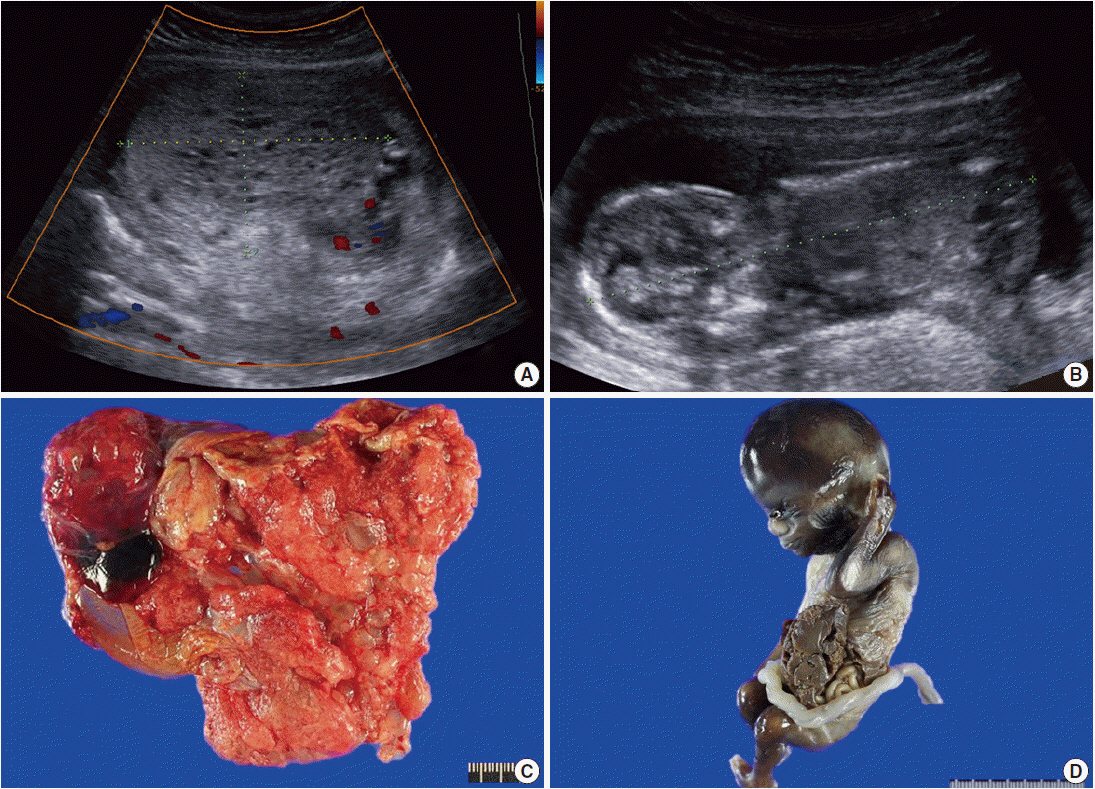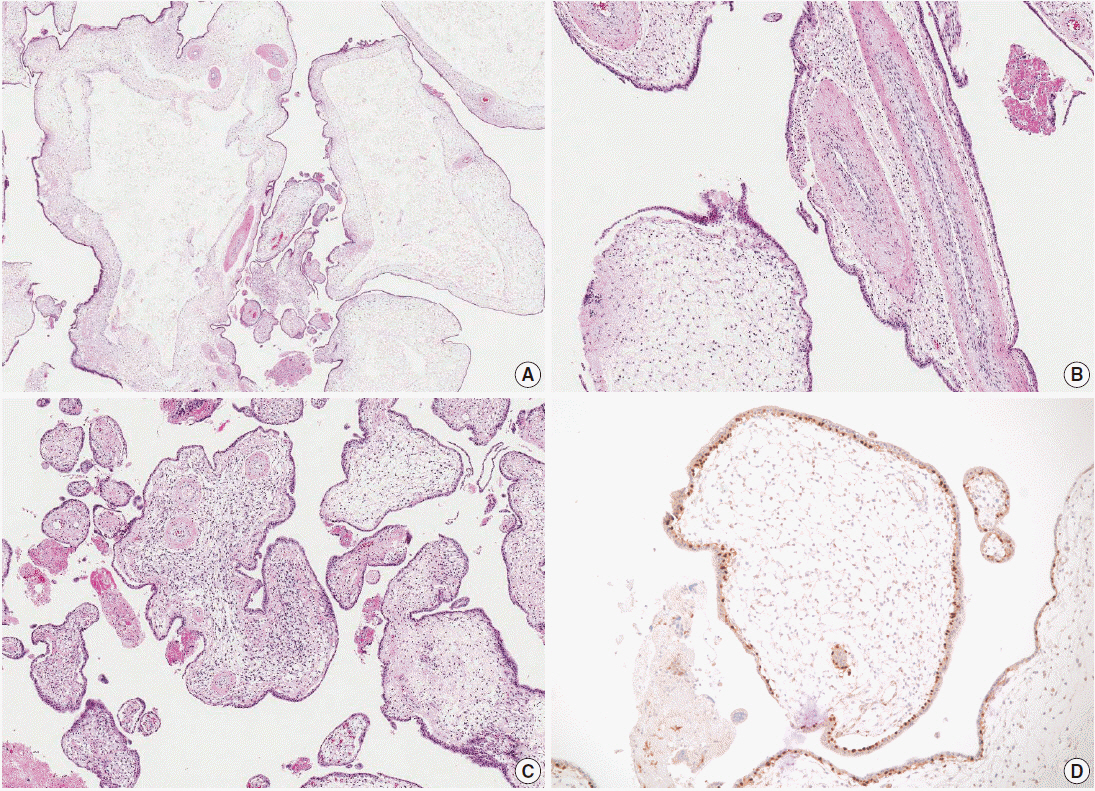J Pathol Transl Med.
2015 Jan;49(1):71-74. 10.4132/jptm.2014.12.14.
Placental Mesenchymal Dysplasia with Fetal Gastroschisis
- Affiliations
-
- 1Department of Pathology and Translational Genomics, Samsung Medical Center, Sungkyunkwan University School of Medicine, Seoul, Korea. jsunkim@skku.edu
- 2Department of Obstetrics and Gynecology, Samsung Medical Center, Sungkyunkwan University School of Medicine, Seoul, Korea.
- KMID: 2381356
- DOI: http://doi.org/10.4132/jptm.2014.12.14
Abstract
- No abstract available.
MeSH Terms
Figure
Reference
-
1. Vaisbuch E, Romero R, Kusanovic JP, et al. Three-dimensional sonography of placental mesenchymal dysplasia and its differential diagnosis. J Ultrasound Med. 2009; 28:359–68.
Article2. Moscoso G, Jauniaux E, Hustin J. Placental vascular anomaly with diffuse mesenchymal stem villous hyperplasia: a new clinico-pathological entity? Pathol Res Pract. 1991; 187:324–8.3. Arizawa M, Nakayama M. Suspected involvement of the X chromosome in placental mesenchymal dysplasia. Congenit Anom (Kyoto). 2002; 42:309–17.
Article4. Parveen Z, Tongson-Ignacio JE, Fraser CR, Killeen JL, Thompson KS. Placental mesenchymal dysplasia. Arch Pathol Lab Med. 2007; 131:131–7.
Article5. Pham T, Steele J, Stayboldt C, Chan L, Benirschke K. Placental mesenchymal dysplasia is associated with high rates of intrauterine growth restriction and fetal demise: a report of 11 new cases and a review of the literature. Am J Clin Pathol. 2006; 126:67–78.6. Heazell AE, Sahasrabudhe N, Grossmith AK, Martindale EA, Bhatia K. A case of intrauterine growth restriction in association with placental mesenchymal dysplasia with abnormal placental lymphatic development. Placenta. 2009; 30:654–7.
Article7. Woo GW, Rocha FG, Gaspar-Oishi M, Bartholomew ML, Thompson KS. Placental mesenchymal dysplasia. Am J Obstet Gynecol. 2011; 205:e3–5.
Article8. Ulker V, Aslan H, Gedikbasi A, Yararbas K, Yildirim G, Yavuz E. Placental mesenchymal dysplasia: a rare clinicopathologic entity confused with molar pregnancy. J Obstet Gynaecol. 2013; 33:246–9.
Article9. Feldkamp ML, Carey JC, Sadler TW. Development of gastroschisis: review of hypotheses, a novel hypothesis, and implications for research. Am J Med Genet A. 2007; 143A:639–52.
Article
- Full Text Links
- Actions
-
Cited
- CITED
-
- Close
- Share
- Similar articles
-
- Placental Mesenchymal Dysplasia Associated with Placenta Previa and Preterm Labor
- Placental Mesenchymal Dysplasia Associated with a Fetal Unilateral Multicystic Dysplastic Kidney: A Case Report
- Fetal Surgery: Gastroschisis Model in Rabbits
- Placental mesenchymal dysplasia associated with severe preeclampsia: A case report
- A case of gastroschisis associated with fetal death in utero, and ultrasonographic findings which were in antenatal period



